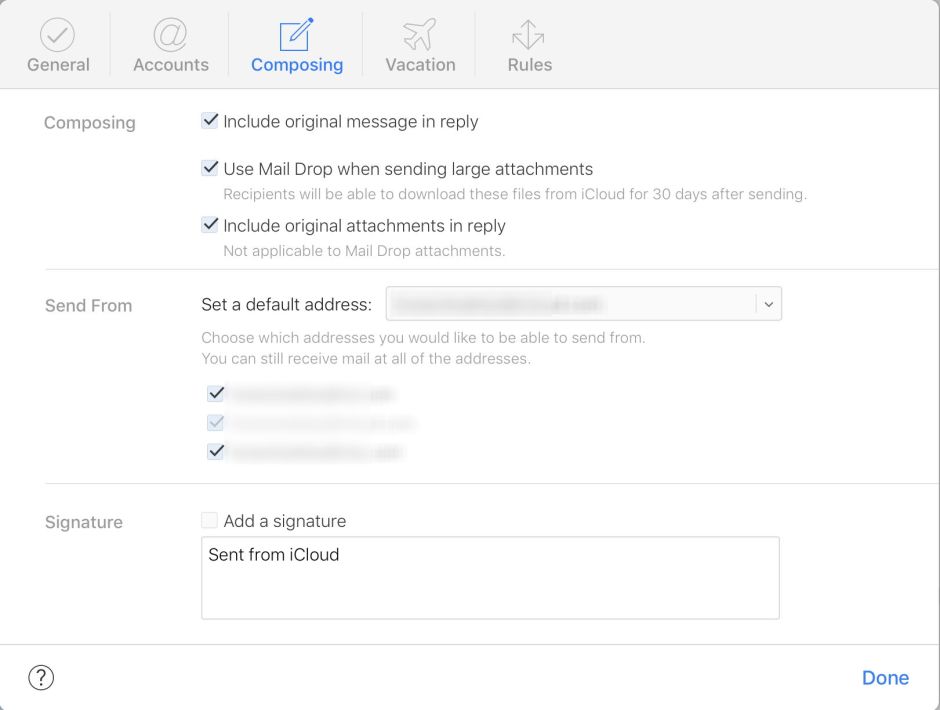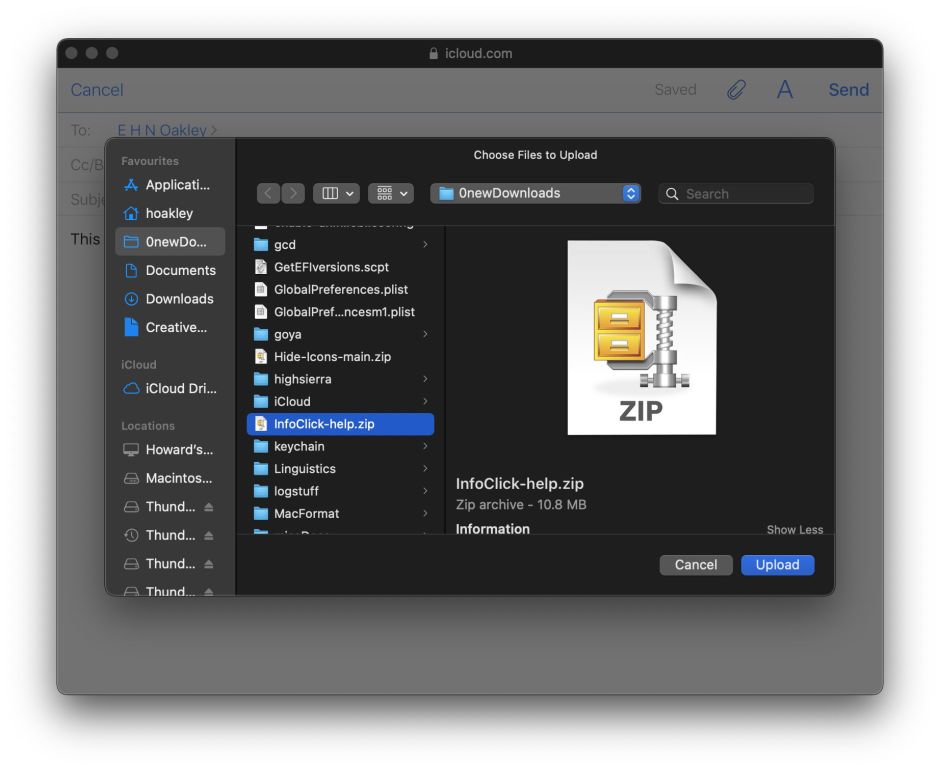Every once in a while, I have to send a large file to someone. As I don’t use DropBox, I could use iCloud Drive shared folders, but that requires Catalina 10.15.4 or later and, more importantly, it uses space from my iCloud allowance. This article explains how you can send files up to 5 GB in size, up to a total of 1 TB each month, without eating into that allowance, using Mail Drop.
If you already use Apple’s Mail app as your email client, you’ll probably be aware that it can send large attachments to messages using Mail Drop. If you haven’t already enabled this invaluable feature, open Mail’s Preferences, select the Accounts item at the top, then select your iCloud mail account at the left, and in the Account Information tab, ensure that Send large attachments with Mail Drop is ticked. You can then add your large file(s) to messages as attachments and send them from the comfort of Mail, knowing that they’ll be uploaded and the recipient will receive a message containing a link to your attachment(s), so that they can download them any time in the coming month.
Sometimes Mail isn’t the most reliable way to use Mail Drop, or, like me, you may prefer to use a different email client. In that case, you can do this through your account at icloud.com instead.
Sign into your account on that page, then at the welcome screen click on Mail.

If you haven’t already done so, you’ll then need to enable Mail Drop here (that’s in addition to any setting in the local app’s preferences). To do that, click on the cogwheel tool at the bottom left corner to edit its preferences. In the Composing section, tick the item labelled Use Mail Drop when sending large attachments.

When you’re ready to send your large attachment, click the Compose tool at the top, compose your message and ensure it’s correctly addressed. To add the attachment, click the paperclip icon and select the file to be attached.

Finally, click on the Send button at the top right of the window.

iCloud may then prompt you to agree to send the attachment using Mail Drop. It uploads the attachment and sends your mail. The recipient then receives a message containing the link from which to download your file.
You can’t force an attachment to be sent by Mail Drop rather than as an attachment. Apple’s mail service decides that by polling the recipient’s mail service to determine the maximum size of attachment which it accepts. If your attachment exceeds that limit, then it will be sent via Mail Drop instead.
Although Mail Drop is part of iCloud, it’s provided from its mail service, which doesn’t eat into your iCloud storage allowance. As each user’s mail service is allocated a total of 1 TB for storage, and the maximum size of an attachment that Mail Drop accepts is 5 GB, if you keep your iCloud mailboxes fairly empty, then Mail Drop should have the capacity to send well over a hundred such attachments in any period of 30 days. Attachments are automatically deleted from your iCloud mailbox once they’re over 30 days old. Full details of the limitations of Mail Drop are given here.
